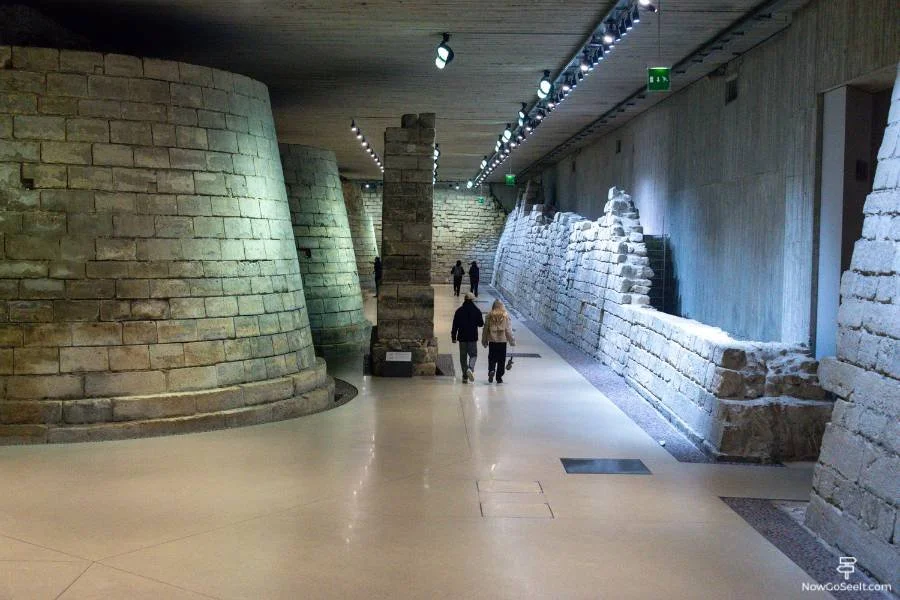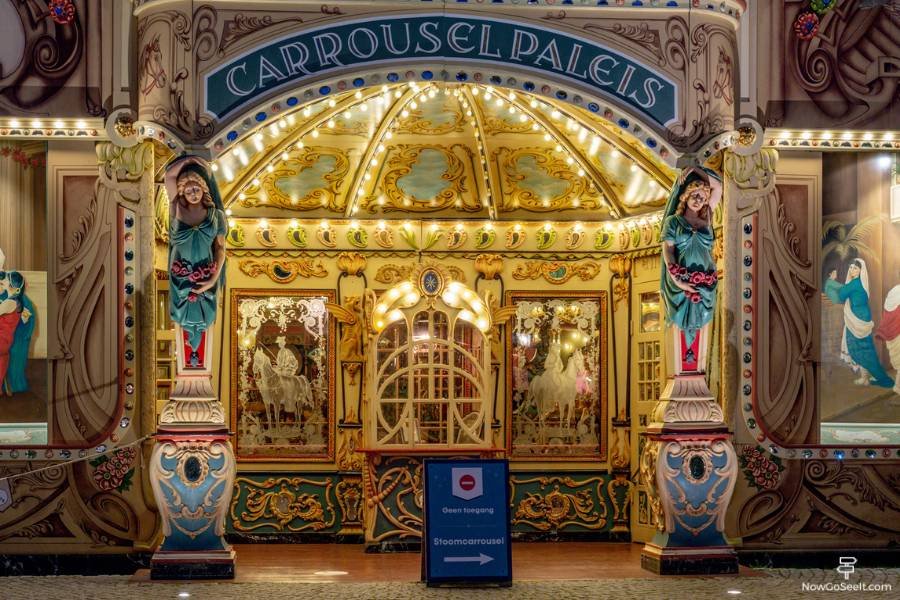What To See at The Louvre: Top Artworks Without Getting Lost
Now Go See It is reader-supported. When you buy through links on our site, we may earn an affiliate commission.
Navigate the Louvre efficiently with this step-by-step guide to must-see masterpieces, including the Mona Lisa, Venus de Milo, Winged Victory, and more!
Top Things To See At The Louvre: (Jump To)
Navigating The Louvre
The Louvre is enormous. If you don’t go in with a game plan, you’ll end up wandering aimlessly, staring at random 17th-century paintings of people you don’t recognize, and missing everything you actually came to see. The museum has over 400 rooms spread across three wings, and if you try to see it all, you’ll be in there for weeks. Instead, here’s a step-by-step plan to hit all the must-see artworks without getting lost or wasting time.
Best Entrance to the Louvre
There are three main entrances. The Pyramid Entrance is the most famous and, unsurprisingly, the most crowded. Expect a security line. The Carrousel du Louvre, the underground mall entrance, is less crowded and accessible via Rue de Rivoli. The Porte des Lions, located on the Seine side, is the closest entrance to the Denon Wing, but it’s often closed. Check before you go. For this itinerary, enter through either the Pyramid or the Carrousel entrance.
Must See Works at The Louvre
This itinerary will take you through the Louvre’s most famous works with clear directions, so you don’t spend half your visit staring at a map, wondering if you’re in the Sully Wing or lost in a medieval dungeon.
The Mona Lisa
(Denon Wing, Room 711 – Salle des États)
How to get there: Enter the museum and head toward the Denon Wing. Take the escalator up to the first floor (Floor 1). Follow the signs and the mob of tourists toward Salle des États, Room 711. The Mona Lisa is at the back of the room, behind bulletproof glass, and surrounded by a crowd with their phones raised.
Why it’s famous: Leonardo da Vinci’s Mona Lisa, painted between 1503 and 1519, is tiny—just 30 by 21 inches, or 77 by 53 cm—which always surprises people who expect it to be massive. The main draw is her mysterious smile and the sfumato technique, which gives the painting its hazy, lifelike effect.
Reality check: It’s always packed. Expect a 30-second view before you’re shuffled away by security. Take your photo, and move on.
The Raft of the Medusa
(Denon Wing, Room 700 – Grand Gallery)
How to get there: Exit the room with The Mona Lisa and enter the Grand Gallery. Look for a massive painting (16 feet tall) with dramatic waves and desperate survivors.
Why it’s famous: Painted by Théodore Géricault in 1819, this massive painting depicts the aftermath of a real-life shipwreck. Survivors cling to a raft, some waving for help, while others collapse from exhaustion. The painting was controversial for its graphic realism—instead of glorifying heroism, it exposes the brutality of the event.
Liberty Leading the People
(Denon Wing, Room 700 – Grand Gallery)
How to get there: It’s in the same room as The Raft of the Medusa.
Why it’s famous: Eugène Delacroix’s 1830 painting shows Liberty personified as a woman leading revolutionaries over barricades, holding the French flag. It’s a symbol of rebellion, and its influence can be seen in everything from political propaganda to the Statue of Liberty.
The Coronation of Napoleon
(Denon Wing, Room 702 – Galerie Daru)
How to get there: walk back toward the exit from the Mona Lisa room and continue walking forward, Look for an enormous painting of Napoleon being crowned.
Why it’s famous: Painted by Jacques-Louis David in 1807, this massive artwork captures Napoleon crowning himself emperor, a power move to show he was above the Pope’s authority. The scene is packed with drama and political symbolism.
The Winged Victory of Samothrace
(Denon Wing, Room 703 – Daru Staircase)
How to get there: Continue in the same direction. You’ll reach a massive staircase, the Daru Staircase. At the top, you’ll see the Winged Victory of Samothrace.
Why it’s famous: This second-century BC Greek statue of Nike, the goddess of victory, is missing its head and arms, but it still looks like it’s about to take flight. The flowing drapery and powerful stance make it one of the most dynamic sculptures in the Louvre.
We share tips and tricks for credit card points and miles. These tools help us save money on our trips around the world by allowing us to accumulate airline and hotel points.
Venus de Milo
(Sully Wing, Room 345 – Galerie des Antiques)
How to get there: From Winged Victory, turn right and enter the Sully Wing. Follow signs for Greek Antiquities on the ground floor (Floor 0). You’ll find Venus de Milo prominently displayed in Room 345.
Why it’s famous: This ancient Greek statue from around 130 BC represents Aphrodite, or Venus, the goddess of love. The missing arms are a mystery—some believe she was holding an apple or a mirror.
Diana of Versailles
(Richelieu Wing, Room 348 – Salle des Caryatides)
How to get there: From Venus de Milo, turn around and continue through the Greek and Roman Antiquities section into the Richelieu Wing. Look for Room 348, the Salle des Caryatides, a grand hall with columns and statues.
Why it’s famous: This first-century AD Roman copy of a lost Greek original shows Artemis, or Diana, the goddess of the hunt, mid-stride with a deer beside her. She looks like she’s about to pull an arrow from her quiver.
Save up to 50% on Paris attractions
The best museums, activities and tours, all on one Paris pass.
The Medieval Louvre
(Sully Wing, Lower Level – Room 130)
How to get there: Head to the Sully Wing’s lower level (Floor -1). Follow signs for Medieval Louvre. You’ll find ancient fortress walls and remnants of the original moat.
Why it’s famous: Before the Louvre was a museum, it was a medieval fortress. The original 12th-century castle walls and moat still exist, giving a glimpse into the building’s past as a military stronghold.
The Code of Hammurabi
(Richelieu Wing, Room 227 – Mesopotamian Antiquities)
How to get there: From the Denon Wing, go to the Richelieu Wing, ground floor (Floor 0). Look for a black stone pillar covered in writing.
Why it’s famous: This Babylonian stele from 1754 BC contains one of the world’s oldest legal codes, including laws like “an eye for an eye.”
Check out our other posts about things to see and do in Paris or France!
Or visit our Destinations page to be inspired.
Final Tips for Navigating the Louvre
Get a museum map at the entrance or use the Louvre app.
Go early or late to avoid crowds. (The museum is open late, often until 9 pm).
Plan for two to three hours minimum to see everything on this list.
Be sure to book tickets in advance online.
The Museum is closed on Tuesdays.
Stick to this route, and you’ll hit the biggest masterpieces without getting lost or overwhelmed. The Louvre is a maze, but now you know exactly how to navigate it.
Top Things To See at The Louvre:
The Mona Lisa
The Raft of the Medusa
Liberty Leading The People
The Coronation of Napoleon
The Winged Victory
Venus de Milo
Diana of Versailles
The Medieval Louvre
The Code of Hammurabi

























